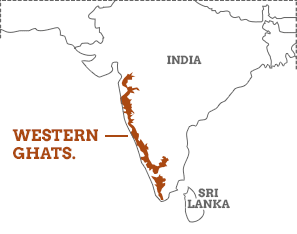INTRO: An intelligence that takes the world to unimaginable, had its beginning in the 1970's. It's depth applications in the field of mastering the upcoming generation has took a drastic step in the techie world.. ARTIFICIAL INTELLIGENCE AND IT'S SUPPORT: TEACHER STUDENT AUTOMATIVE ADMINISTRATIVE TARead more
INTRO: An intelligence that takes the world to unimaginable, had its beginning in the 1970’s. It’s depth applications in the field of mastering the upcoming generation has took a drastic step in the techie world..
ARTIFICIAL INTELLIGENCE AND IT’S SUPPORT:
| TEACHER | STUDENT |
| AUTOMATIVE ADMINISTRATIVE TASKS | ENHANCED EDUCATION |
| CURRICULUM FORMATION | PERSONALISED LEARNING |
| EFFECTIVE EDUCATING METHODOLOGY | SELF EVALUATION |
| EASY EVALUATIONS | INDIVIDUALISM |
|
EMPOWERING IN TECHNOLOGY CRITICAL APPLICATIONS MIND RELAXATION |
GLOBAL ACCESS OF AI: United States- the global power house of artificial intelligence stands as top in implementing it in the education. Singapore, Finland, Japan, China, Canada and many more countries had already stepped into this beautiful educational system with their different curriculum establishment.
AI- INDIA AND EDUCATION: NEP(New Education Policy-2020) introduced a milestone in development in education by making a step into Artificial Intelligence. As per NEP, the curriculum introduced AI and coding from K-6 onwards, and teachers are to be trained effectively with the technology. Introduction of AI based assessments and its various features develops the leaning methodology. A platform laid by the government called NETF (National Educational Technology Forum) for the enhancement of the technology.
RISKS :
- Complete dependency on technology leads to lack of critical thinking and problem solving skills.
- Data privacy lacks
- Implementation cost is high.
CONCLUSION: The game changer “(ARTIFICIAL INTELLIGENCE)” with virtual tutors, automated assessments, gamified learning platforms and many more would provide the generations with an undefined knowledge development.
Thanks to FATHER OF Artificial Intelligence “MR. JOHN MCCARTHY” for being a base for this wonderful technology…..
See less

Water scarcity in Indian cities, including Delhi, is a complex problem affected by infrastructure problems, climate change, and over- and misuse of water resources. Let's explore each factor in detail regarding Delhi: Infrastructure Issues 1. Aging Infrastructure: Delhi's water supply infrastructureRead more
Water scarcity in Indian cities, including Delhi, is a complex problem affected by infrastructure problems, climate change, and over- and misuse of water resources. Let’s explore each factor in detail regarding Delhi:
Infrastructure Issues
1. Aging Infrastructure: Delhi’s water supply infrastructure, including pipes and treatment plants, is often outdated and poorly functioning. leading to significant water losses due to leakages and due to inefficiency.
2. Inadequate Coverage: Many areas, especially slums and slums, lack adequate water supply infrastructure, forcing residents to rely on unregulated sources such as groundwater or water tankers.
3. Ineffective Water Management: Lack of effective water management practices, including failure to recycle and reuse wastewater. Investments in the modernization of water and sanitation systems are insufficient.
Climate Change
1. Irregular Rainfall: Climate change has resulted in unpredictable monsoon patterns with periods of heavy rain followed by long periods of dry weather. This variability affects the replenishment of water sources such as rivers and groundwater.
2. Rising Temperatures: Rising temperatures increase the rate of evaporation and increase the need for water, especially during the summer months. This increases the water shortage in the city, which is already in high demand.
3. River Depletion: Climate change is affecting the flow of rivers like the Yamuna, which supply Delhi with water. River flows caused by melting glaciers and altered precipitation can reduce water availability.
Excessive Use and Abuse
1. Depletion of groundwater: Excessive extraction of groundwater for domestic, industrial and agricultural use has caused a serious depletion of groundwater. In many parts of Delhi, the groundwater level is falling alarmingly.
2. Inefficient Water Use: There is widespread inefficiency and waste in water use. Practices such as overwatering gardens, leaky faucets and inefficient irrigation methods contribute to water scarcity.
3. Pollution: Poor water management and pollution further reduce the availability of clean water. For example, the Yamuna River suffers from severe pollution, making it dangerous to use its water without thorough treatment.
Specific Context of Delhi
1. Population Pressure: The rapidly growing population of Delhi is putting enormous pressure on water resources. Demand for water clearly outstrips supply, exacerbating water scarcity.
2. Legislative Challenges: Regulatory and management challenges include illegal groundwater extraction and inadequate enforcement of water protection laws.
3. Interstate water disputes: Delhi’s water supply is also affected by interstate water disputes. The city’s dependence on water from neighboring states like Haryana makes it vulnerable to water-sharing conflicts.
Justification Delhi’s water shortage cannot be explained by a single factor. Instead, it is caused by infrastructure deficits, the effects of climate change, and the overuse and misuse of water resources. Solving this problem requires a multi-pronged approach:
1. Infrastructure upgrade: Modernization of water supply and distribution infrastructure, as well as investments in wastewater recycling and rainwater collection, can help reduce shortages.
2. Climate Adaptation: It is important to develop strategies to face the consequences of climate change, such as improving water storage and improving watershed management.
3. Sustainable water use: Promoting water conservation practices, regulating groundwater and reducing pollution are important for sustainable water management.
4. Policy and Governance: Strengthening water management, resolving transnational water disputes and enforcing regulations can improve water management and water distribution.
By addressing these interrelated factors, Delhi can work towards a more sustainable and reliable water supply system..
See less